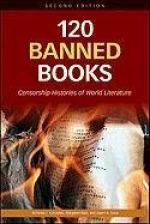|
This section contains 12,671 words (approx. 43 pages at 300 words per page) |

|
SOURCE: Mayo, Marlene J. “Literary Reorientation in Occupied Japan: Incidents of Civil Censorship.” In Legacies and Ambiguities: Postwar Fiction and Culture in West Germany and Japan, edited by Ernestine Schlant and J. Thomas Rimer, pp. 135-61. Washington, D.C.: The Woodrow Wilson Center Press, 1991.
In the following essay, Mayo describes and analyzes the ways in which the U.S. occupying forces censored fiction and poetry by Japanese writers and how Japanese writers resisted and subverted attempts at censorship.
From September 1945 to April 1952, political, economic, and psychological reorientation of occupied Japan was a conscious policy of the postwar American government. This included an ambitious program of ideological reprogramming in support of the American rise to globalism. Japan was in effect reconstituted as a giant reeducation camp under the supervision of General Douglas MacArthur, Supreme Commander for the Allied Powers Japan (SCAP). The concrete aims were to end Japan's “feudal...
|
This section contains 12,671 words (approx. 43 pages at 300 words per page) |

|


